
Born in 1920, baritone-voiced Gene Howard’s role in the iconic 1960 compilation “Love Is a Drag” reads like a superhero’s backstory.
A mild-mannered man from Atlanta, Georgia, he played high school sports and was a big-band enthusiast, inspired by the likes of Frank Sinatra, Dean Martin and Tony Bennett.
Howard soon took up singing and was eventually hired as a staff vocalist in 1941 for a radio station in Nashville. He sang alongside noted vocalist Kitty Kallen, and his radio position led to several collaborations and stints with bands.
Although he had mild success—including being featured on Stan Kenton’s “How Many Hearts Have You Broken?”—Howard was far from a star. He joined Kenton for a string of performances in April 1944 through 1948. But In fact, he told the Fort Worth Star-Telegram that his recording experience with Kenton nearly destroyed his voice.
“I had to sing louder than I’d ever sung in my life in order to be heard over the band,” he explained. “After four years I found that what voice I’d had was gone.”
Howard’s career went with it.
In the 1950s, he pivoted and kept a foot in music by opening a publicity firm, representing the likes of Nat King Cole, Les Paul, Les Brown, and Kenton. Then he pivoted again to become a portrait photographer and partnered with music industry fixture Murray Garrett to create the photo studio Garrett/Howard Inc., which specialized artwork for album covers. But little did Howard know, his partnership with Garrett would soon secretly push him into the spotlight as a music icon for gay men.
Garrett was tasked by an Edison International record label executive to help develop an album concept that would shake up what was normally being produced. His suggestion was an album of jazz standards and love songs written about men performed by a man. In this way, the male vocalist would be singing about another man. Garrett had reportedly seen it done during a visit to a cabaret club in New York City, to much success, and felt the concept would be a good way to tap into a market of queer jazz lovers.
The key to pulling off the project was to get a male vocalist with an unrecognizable voice, so listeners would focus on the music over the man. Howard—who had not sung in years, and was saddled with a wife and two kids by then—proved to be the perfect voice for the pitch. And though he was not gay, he understood the potential impact the project could have.

After some convincing that the project would be produced with class and care, Howard and a group of musicians gathered in a recording studio in 1959 to record what would become, “Love Is a Drag.” With time, Howard’s voice had become velvety and added to the jazz feel of the record.
He performed lyrics that had him pinning for his “Prince Charming” and for someone “big and strong” to take care of him, including Billie Holiday’s famous plea for a “lover man” that would smother him with kisses. The project was done in secret but there was nothing secret about the album’s success when it was released in 1960.
Backed by a jazz quartet, the album featured Howard singing “Lover Man,” “Mad About the Boy,” “He’s My Guy,” and other standards made famous by women singing about men. And because Howard sang the songs without a hint of camp, the album attracted those who truly appreciated jazz music and became a hit among gay men.
The liner notes of the album prefaced that it was only natural for a man to sing the songs because they were written by men: “Were they not written by men? And haven’t they been played by the best men musicians of our time? Think what would happen if orchestrations of these great songs could be performed only by girl musicians!”
Only Howard’s voice made the album. For the cover, a silhouette of a young man was used as he exhaled a plume of smoke. Behind him was a blond haired figure of indeterminate gender, and a warning: FOR ADULT LISTENERS ONLY—SULTRY STYLINGS BY A MOST UNUSUAL VOICE.
Veteran singer/pianist Charles Cochran once called Howard the “quietest person I’ve ever known in my life.” He added, “ I wondered, is he mute? He had a face that you would be hard-pressed to remember a year later.”
As it turned out, Howard didn’t need much of a face to make a lasting impact. More than 60 years later, love is still a drag. But Howard’s contribution to “Love Is a Drag” remains a sweet show of LGBTQ+ allyship.
Listen to the album in full below.



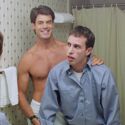
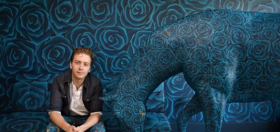


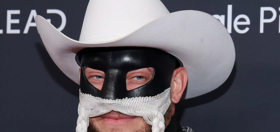

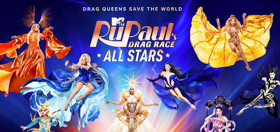


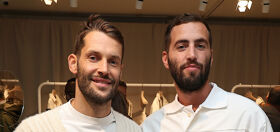


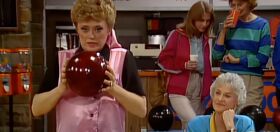

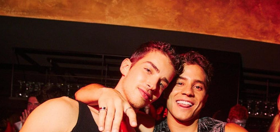
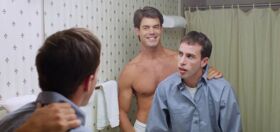


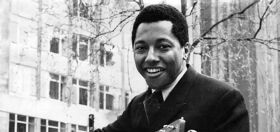
abfab
Thanks Emell! 62 was an interesting year for songs about longing for one’s love. I adopted this one about a boy I loved…and missed. They don’t write ’em like this no mo.
What shall I write
What can I say
How can I tell you how much I miss you
The weather here has been as nice as it can be
Although it doesn’t really matter much to me
For all the fun I’ll have while you’re so far away
It might as well rain until September
I don’t need sunny skies for things I like to do
‘Cause I stay home the whole day long and think of you
As far as I’m concerned each day’s a rainy day
So it might as well rain until September
My friends look forward to their picnics on the beach
Yes everybody loves the summertime
But you know darling while your arms are out of reach
The summer isn’t any friend of mine
It doesn’t matter whether skies are gray or blue
It’s raining in my heart ’cause I can’t be with you
I’m only living for the day you’re home to stay
So it might as well rain until September
September, September, oh,
It might as well rain until September
? 1962 Screen Gems-EMI Music, Inc. (BMI), Screen Gems-EMI Music, Inc. (BMI)
dbmcvey
I have a couple of copies of this. It’s very good, he’s got a kind of Chet Bakerish style.
abfab
I love Chet Baker. He really is like butter.
still_onthemark
Wow. As Spock would say, ‘Fascinating.” As Takei would say, “Oh my!”